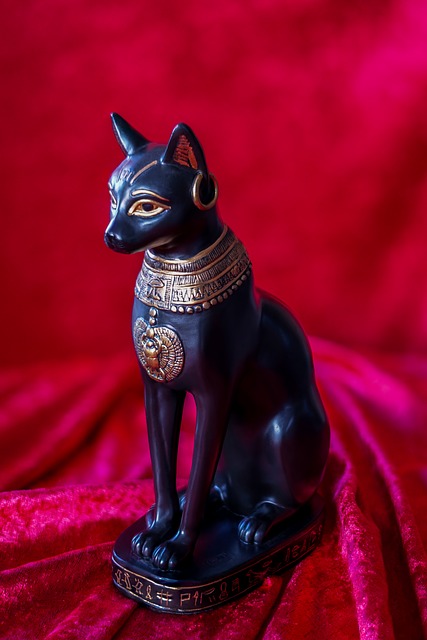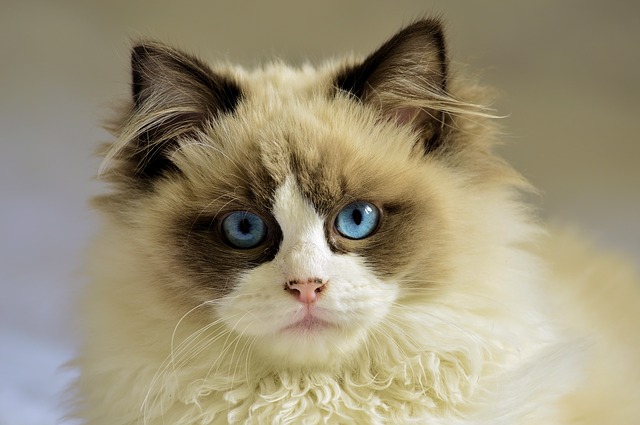For thousands of years, human society, as well as our domesticated animals, have kept an eye on the changes in history. Of all the pets, the cat is perhaps the most frequent in human society.
From being the goddess of love, perfection and fertility of Egyptian civilization to becoming a death threat to the life of rats in small corners of our house, Cats tend to be everywhere around us.
Our long-standing relationship with cats may arouse the curiosity of many as to how cats become domesticated.
Out of curiosity, we also found the answer to the question of how the cat came out of the desert, onto the sofa and shared the details with you.
Types of Cats
History of Cats
Common Features among Cats
When We Adopted Cats
How did cats become domesticated?
Types of Cats
The most common and most popular breed of domestic cat is the felis catus. This species has shown the most evolutionary examples within the Felidae Family (a term used to refer to both wild and domestic cats). We identify three types of cats in our everyday ecological system.
- Panthera – This category belongs to Lions, tigers, leopards and jaguars. In one word to those who can roar.
- Acinonyx – Popularly known as The Cheetah.
- Felis – Small or domesticated cats.
However, identifying the Felidae family is a difficult task, even for experts. Especially if they are trying to point out their skull. More recent investigations have suggested eight distinct lineages within the Felidae family which could lay the groundwork for their reconstruction in the future.
History of Cats
All cats have evolved as a predator and mammal, especially with intense knowledge of hearing, sight, and smell.
Physiological features according to the structure of the round head and skeleton indicate that all 37 recognized species in the felidae family probably evolved from a common ancestor in Asia about 10-12 million years ago.
From 3 million years ago today, cats began to spread across all parts of the world except the Arctic, Antarctic and Australia.
Breeding from primitive times and building their own bases around their prey by following them has now evolved into the characteristic features of cats living with humans and being our worthy companions.
The first evidence of grain collection from Israel was found about 10,000 years ago, and it is known that the development of grain stores also increased the number of rats in the house.
This increase in the number of rats first attracted wild cats to humans and later led them to become our pets. Cats may be more tolerant of humans and more likely to come close to human settlements but of course, the decision is entirely up to them.

Archaeological evidence suggests that cats usually began living together with human settlements in the Fertile Crescent (Israel and neighboring countries) about 3,700 years ago.
History takes us far back to the Egyptian era where cats began to be worshiped in the form of a goddess Bastet, about 2900 years ago. According to that custom, large numbers of cats were sacrificed to Bastet, indicating that the Egyptians were actively breeding cats at the time.
In Egyptian culture, cats are indicated in the Book of the Dead, where a cat represents Ra and the benefits of the sun for life on earth.
Common Features among Cats
Although cats can be divided by species, most of them have similar characteristics. The Felidae family is the most cunning and dangerous predator among mammals. Except for the lions, of course, because they are accustomed to living in groups.
Moreover, other wild cats have acquired the ability to hunt and fend according to their needs.
Cats like to pick their own territory. Where they hunt and mark their area mainly with their own scent. They come together essentially for mating and can be called solitary animals.
Again with the exception of lions (where males have a distinct mane) the appearance of male and female cats is very similar. The only way to distinguish them is that male cats are slightly larger than females.
All the cats have five marks on the front legs and four digits on the hind legs which are protected by pads. These pads are also capable of protecting their feet when walking on hard surfaces, giving them a feeling of cold and heat.
Not only that, these pads also help to reduce the noise of their feet while hunting. All cats except cheetahs have retractable claws. Cats develop coats of color under natural conditions. This evolution has made their predatory life easier and more exciting.
When We Adopted Cats
Although modern cat breeding began in the 19th century, Evidence of cats and humans living together can be found from fossil records of early human settlements. According to experts, cats of that time are considered to be wild.
The development of true domestication or perhaps more accurately the ‘training’ of cats was thought to have taken place in Egypt about 3600 years ago.
The skull found in the tombs of Egyptian cats (known as Mau by the Egyptians) has been identified primarily as an African wild cat and is now considered to be the main ancestor of the modern-day Felice cats, a native of Asia and North Africa.
However, more recent data suggests that keeping cats as pets probably took place in the Middle East, a fertile crescent region, about 10,000 years ago.
The earliest true record of domestication comes from a cat that was intentionally buried with its owner in a grave in Cyprus about 9,500 years ago, and it is thought that domestication began some time ago as there were no native cats in Cyprus.
People must have brought them by boat from the nearby Levantine coast. Research suggests that people in the Middle East began keeping cats as pets long before the Egyptians.
Considering all the facts, we can now say that we have adopted cats as companions since humans began building their settlements in the Middle East. The Middle East was then known as the Fertile Land or the Cradle of Civilization.
How did cats become domesticated?
As a result of living closely with humans, a kind of gradual evolution can be observed in wild cats, later known as felis cactus.
However, the method by which this species of cat is tamed cannot be called domestication in the true sense. Although there was not much change when the cats become domesticated.
On the contrary, their characteristics are still very much the same as those of their wild ancestors. They are still capable enough to survive in the wild, and most cats return to wildlife at the instigation of their ancestors.
One of the two main theories based on the history of the domestication of cats is that the original wild cats were chosen by humans because they were friendly and relatively easy to tame.
As another theory, we can say that humans did not specially select any wild cats, but rather that the behavior of these wild cats was the most tolerable.
Since they love to hunt and the existence of their prey is most evident in the vicinity of human settlements, they move from wildlife to humans in search of prey. Naturally, as time went on, these cats forgot about their wildlife and adapted to human society becoming an integral part of us.
Most of those who are immersed in the Felidae family’s research agree on the second formula. Because if in the beginning people had the desire to keep some selected wild animals, they could keep dogs or ferrets instead of cats. Since they are more efficient and effective than cats.
Whatever may be true of the above two theories, the different characteristics of cats such as their small size, social nature, body language, love of sports, high intelligence and possibly a tendency to be tamed from birth are enough reasons for choosing them as pets.
Most domesticated animals provide excellent examples and evidence for the benefit of humans, especially those who stay in herds. Of course cats are naturally out of this calculation.
It is defined as reproduction, care, and reproduction to be completely controlled by humans producing a reproductively isolated population.This can only be applied to pedigree cats, which are very small in proportion to the total domesticated cat population.
Undoubtedly, one of the attractions of cat ownership today is that cats have changed somewhat from their wild relatives which make many features to imitate their wild ancestors.
Today’s domestic cats also retain many of the characteristics of their desert-dwelling ancestors, including the ability to survive with very little urine production (even more than dogs) and the production of relatively dry feces with very little water consumption and thus reducing water loss.
Even if the skin temperature exceeds 52 degrees Celsius, they have a total ability to withstand that intensity, showing no signs of discomfort.
However, when the skin temperature exceeds 44.5 degrees Celsius, people start feeling uncomfortable. Moreover, domestic cats show very few signs of changes in body temperature during the twenty-four hour period. Since they have a habit of being alert both day and night.
This is our small effort to get you free answers to any of your curious questions about cats, no matter where you are in the world. Instead, as a charity, we just need your unwavering support so that we can keep our content accurate and relevant.
Thank you for spending your precious time visiting our cat’s blog. Don’t forget to let us know what you think of this content, please share your insights with us here.

